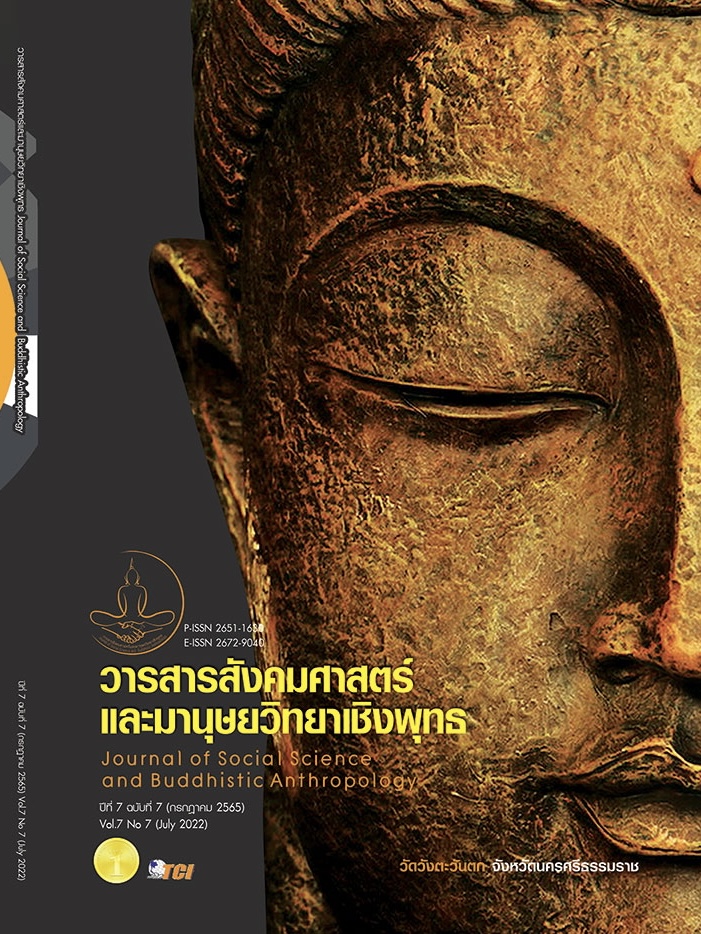PROPOSED GUIDELINES FOR DEVELOPING A HEALTH LITERACY PROMOTING MODEL TO PREVENT ROAD ACCIDENTS FROM MOTORCYCLING AMONG UPPER SECONDARY SCHOOL STUDENTS
Keywords:
Model Development, Health Literacy, Motorcycle Driving, Upper Secondary School Students, Intervention MappingAbstract
The objective of this research article were to develop a health literacy promoting model to prevent road accidents from motorcycling among upper secondary school students. This descriptive research consisted of 2 steps: 1) develop the model with the concept of health literacy together with the application of intervention mapping as a base for development; and 2) study the quality of the model from 5 experts by purposive sampling. The data were analyzed using mean and standard deviation. The major findings revealed that the STRIVE Model has the following components: 1) S: Significance and objective 2) T: Terms and Conditions 3) R: Ready to start 4) I: Improve health literacy activity plan with 8 integrated learning management plans that integrate with learner development activities in secondary schools that focus on active learning for students to be brave, dare to make decisions, think carefully, rationally, have the ability to think and analyze data appropriately, or being as a striver person. 5) V: Verification and evaluation 6) E: Effective management. The overall quality assessment of the developed model was at a very good level. Therefore, this research suggests that the developed model should be implemented in order to provide students with health literacy with safety behaviors and lead to the reduction of motorcycle accidents.
References
Bartholomew, K. et al. (2006). Planning health promotion program: an intervention mapping approach. (2nd ed). San Francisco, CA: Jossey-Bass.
Best, J. W. (1977). Research in education. (3rd ed). New Jersey: Prentice hall Inc.
Chanpanich, P. et al. (2020). Public policy. Bangkok: Department of disease control, Ministry of public health.
Fernandez, M. E. et al. (2019). Implementation mapping: using intervention mapping to develop implementation strategies. Front Public Health, 7(1), 1-15.
Kaeodumkoeng, K. (2019). Health literacy: functional interactive critical. Bangkok: Amarin Printing &Publishing Public., Ltd (TH).
Kalawa, A., & Ponrachom, C. (2020). Development of violent behavior prevention and management program in the tertiary level hospital. Research and Development Health System Journal, 13(3), 27-35.
Koutoukidis, D. A. et al. (2018). Use of intervention mapping to adapt a health behavior change intervention for endometrial cancer survivors: the shape-up following cancer treatment program. BMC Public Health, BMC Public Health, 18(1), 1-110.
Nutbeam, D. (2000). Health literacy as a public health goal: a challenge for contemporary healtheducation and communication strategies into the 21st century. Health promotion international, 15(3), 259-267.
Ponrachom, C. (2018). The causal structural relationship model and effectiveness of the alcoholdrinking behavior modification model on undergraduate students (dissertation). Bangkok: Kasetsart University.
Ponrachom, C. & Boonchuaythanasit, K. (2019). Handbook “alcohol drinking behavior modification model on undergraduate students” hed_hpro model (2nd ed). Bangkok: Denex Intercorporation Company Limited.
Siriwat, S. et al. (2020). Parental behavior modification program for pesticide exposure prevention among children in agricultural areas for health promoting hospital. Bangkok: Denex Intercorporation Company Limited.
Sommart, J. (2013). Applying the intervention mapping for developing and implementing school-based sexuality education for secondary school students in high school, Khon Kaen Province (dissertation). Khon Kaen: Khon Kaen University.
Ten Hoor, G. A. et al. (2017). Development, implementation, and evaluation of an interdisciplinary theory- and evidence-based intervention to prevent childhood obesity: theoretical and methodological lessons learned. Front Public Health, 5(1), 1-9.
Thasai, K. et al. (2021). Factors affecting risk behaviors influencing motorcycleaccident among senior high school students. Journal of Safety and Health, 14(1), 50-67.
Wang, D. et al. (2019). Road traffic accident severity analysis: a census–based study in China. Journal of Safety Research, 70(1), 135-147.
Wattanaburanon, A. & Piyaaramwong, P. (2020). Health education learning management in schools amidst the COVID-19 pandemic: concepts and guidelines. J Bamrasnaradura Infect Dis Inst, 14(3), 192-202.
WHO. (1998). Health promotion glossary. In Geneva: Division of Health Promotion, Education and Communications, Health education and Health Promotion Unit. World Health Organization.
WHO. (2020). Road safety injuries. Retrieved September 1, 2021, from https:// www.who.int/health-topics/road-safety#tab=tab_1
Downloads
Published
How to Cite
Issue
Section
License
Copyright (c) 2022 Journal of Social Science and Buddhistic Anthropology

This work is licensed under a Creative Commons Attribution-NonCommercial-NoDerivatives 4.0 International License.








